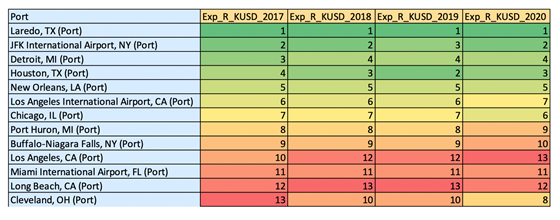R-13 Risk Bulletin – August 2021
Monthly Risk-Bulleting: August 2021
Date: September 11, 2021
Last revised: Dec 5, 2021
Objective
The objective of the Monthly Risk-Bulletin is to provide an overview a) of lessons learned during the past month in the project, b) of a score-card-type system to communicate the state of risk of supply chains impacted by COVID-19 supporting health infrastructure and the workforce between the U.S. and Mexico, and c) of a communication system to facilitate the restoration of broken supply chains and the formation of new ones to reactivate trade between U.S. and Mexico. The report aims to offer valuable insights to the general public and decision-makers towards informed preventive actions to reduce the current pandemic’s potential impact on critical supply chains and better strategize about feasible social, economic, and environmental risk-mitigating actions against COVID19 and converging threats. This bulletin is jointly produced by the project’s PIs, the project’s contractors, and the U.S. binational task force serving as advisors to the project.
| Project PIs | |
|---|---|
| Zenon Medina-Cetina, PhD – PI | Gregory Pompelli, PhD – Co-PI |
| Matt Cochran, DVM, MIA – Co-PI | Maria Jose Perez-Patron, PhD – Co-PI |
| Miriam Olivares, GISP – Co-PI |
| Document prepared with the support of: | Reviewed & Approved by: |
| Guillermo Duran | Dr. Medina-Cetina – PI |
| PhD Students SGL – Graduate Research Assistants | Date: 11/26/2021 |
Suggested citation:
Medina Cetina, Z., Pompelli, Gregory, Cochran, Matt, Olivates, Miriam, Perez-Patron, Maria J., Duran, Guillermo, Alvarado, Juan Pablo (2021). CBTS-R13: U.S.-Mexico Risk Taskforce to Support the Health Supply Chain Systems for Infrastructure and Workforce Threatened by the COVID19 Pandemic. https://r13-cbts-sgl.engr.tamu.edu/
@misc{Medina2021,
author = {Medina Cetina, Z. and Pompelli, Gregory and Cochran, Matt and Olivates, Miriam, Perez-Patron, Maria J. and Duran, Guillermo and Alvarado, Juan Pablo and Alexi, Allen, and Torres, Cesar, and Lopez-Acosta, Araceli, and Sanchez-Siordia, Oscar, and Rojas, Minerva},
title = {*CBTS-R13: U.S.-Mexico Risk Taskforce to Support the Health Supply Chain Systems for Infrastructure and Workforce Threatened by the COVID19 Pandemic*},
url={https://r13-cbts-sgl.engr.tamu.edu/},
year={2021},
month={August}
}R-13 Risk Bulletin – August 2021
Introduction
This month included many important milestones for the taskforce. To end out the final month of this term of the project, The Dashboard V2.1 was released, the Risk Scorecard methodology was updated, Risk Communication Platform was published, and important milestones were met in research for all the projects.
II. Risk Communication Mechanism
R-13 Dashboard V2.1 Release
The R-13 Dashboard V2.1 was released on August 20th, 2021, during the R-13 Taskforce meeting. This version includes new modules such as Mexico Heuristic Mortality Risk, CCPR variables, and US Vaccination. For more information about these modules, please visit: https://cbts-sgl.engr.tamu.edu/
Risk Communication Platform Updates
Migration to the main wordpress site from the development environment began and was finished this month. Due to each component being packaged in easy-to-migrate containers, this process was relatively easy, and necessary configuration changes were coordinated with the IT Team.
The search feature was also implemented at the beginning of the month. Initially, a plugin was identified for this, however due to the way the custom database functioned, a custom php and html was utilized to search and display the information input into the search bar. This feature is the backbone of the site essentially, as users must be able to parse the large database by keyword to find businesses which fit their needs. The prototype search feature can be seen in Fig. 1.
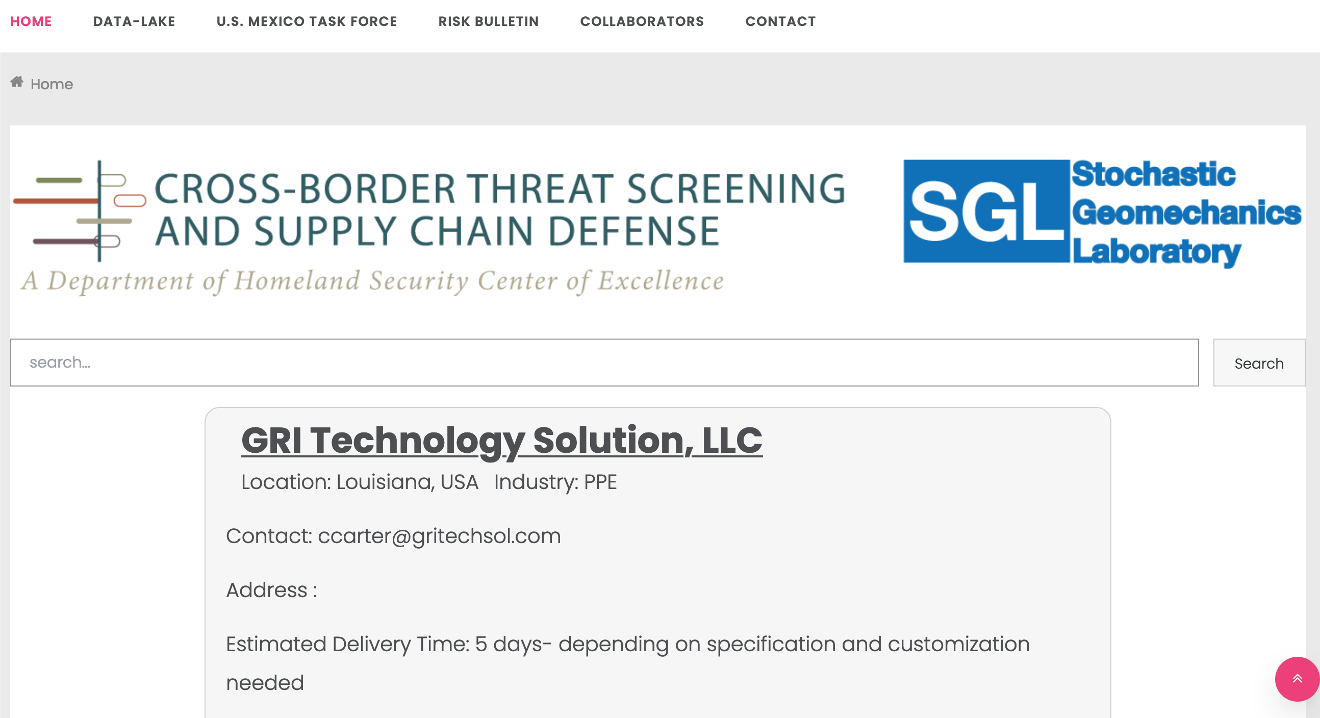
Next, a registration form had to be established to collect the necessary information from businesses and pipe the information into our business database. This was done using custom php and html code, which connected to the wordpress database custom tables. During this month, there were also over 150 new businesses added to the database.
The final technical milestone of the Risk Communication Platform that was implemented is the registration process. All other technical features were previously implemented and this process is necessary so that businesses can sign onto our platform, create a profile for themselves and add to the database.
Registration Process – For this process, the built in registration function in WordPress will be used combined with the User Registration process which bolsters the abilities built in: – User Registration handles: Login. – Registration. – Profile Creation.
The conceptual model of the registration process is outlined in Fig. 2, wherein two databases will be utilized to handle the login process and the adding to the business database. The authentication database will process logins, and a form will be utilized to add business information to the business database – Ensures security as well as ease of use for businesses signing up.
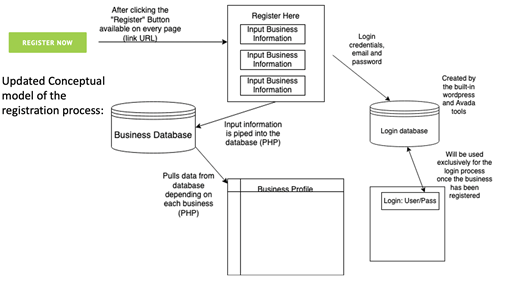
Finally as of August 22 the Minimum Conceptual model of the wordpress site was completed and live on the main wordpress site along with the dashboard and risk bulletins. The registration process was completed and all features made live. Moving forward, there are ambitious plans to expand the amount of information, design and features of the platform.
Risk Scorecard Updates
Different methods were tested on the R13 scorecard map to rand CDC-SVI Indices (Impacts, Threats, Systems and Risk). The rationale for choosing the addition method is shown in Fig. 3.

Method one below, Fig. 4, shows the ranked addition method of computing the indices.
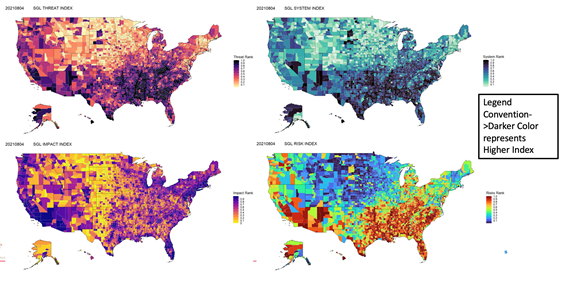
Fig. 5 shows the scaled addition method results.
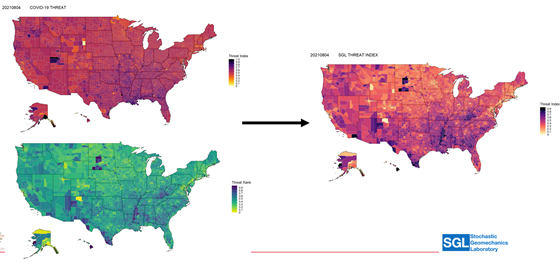
Principal Component Analysis (PCA) is being used on the Risk Scorecard variables to better complete the analysis. PCA is a descriptive method that aims to reduce dimension of large datasets by transforming the existing variables to fewer new variables that contain the information of the original dataset. The new variables are then constructed from a linear combination of the initial variables. 10-dimensional data will yield 10 principal components but only PCA will put the maximum possible information on the first component.
U.S. Ports and Risk Scorecard
Synthetic case study exercise.
Objectives: 1. To identify the main U.S. ports in terms of imports and exports. 2. Assign the corresponding values of the Risk Scorecard to every port for a synthetic case of study. 3. Find the distribution of Risk Scorecard values for selected ports, and selected HS codes.
The methodology for the Risk Scorecard for US Ports is shown in Fig. 6.
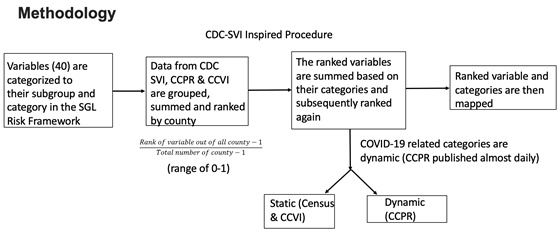
The Workflow followed for the project is represented in Fig. 7.
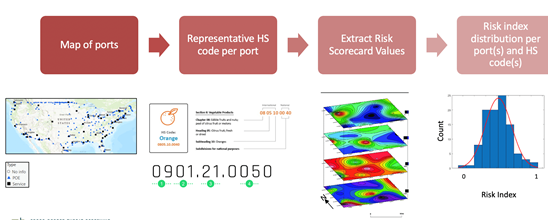
The results of the Threat analysis found were characterized by port, and displayed in Fig. 8.
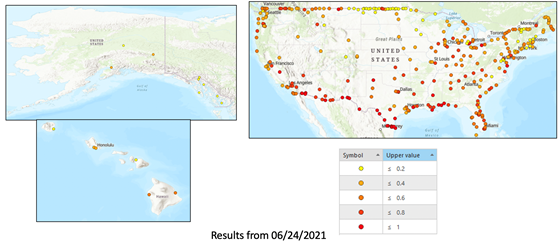
The results of the Threat analysis found were characterized by port, and displayed in Fig. 9.
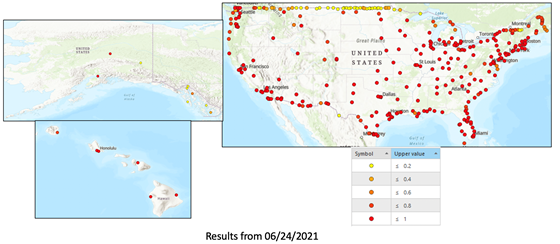
The results of the Impact analysis found were characterized by port, and displayed in Fig. 10.
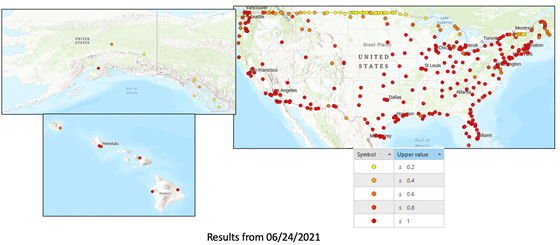
Finally, Risk score was computed by port and presented in the following summary table (Fig. 11):
